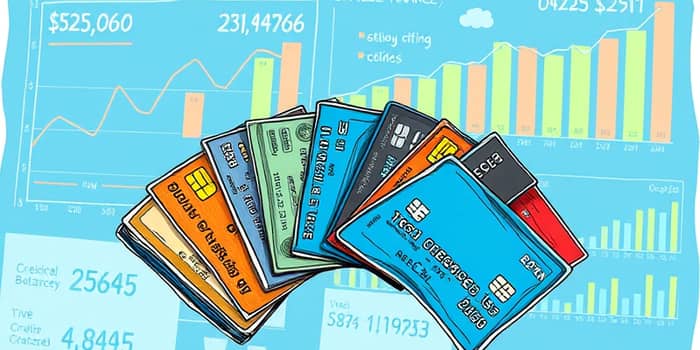
Having multiple credit cards can open doors to rewards, emergency funds, and greater financial flexibility. But is juggling several plastic cards beneficial or detrimental to your overall credit health? In this comprehensive guide, we break down the mechanics of credit scoring, weigh the advantages and drawbacks of carrying more than one credit card, and provide actionable advice so you can make informed decisions.
Whether you are just starting your credit journey or seeking to optimize a mature profile, understanding the nuanced impacts of additional accounts will empower you to wield credit responsibly. Let us explore how to maximize benefits and mitigate risks on your path to a stronger financial future.
Your credit score is a three-digit number that reflects your financial reliability in the eyes of lenders. In most scoring models, good credit scores range from 670 to 739, scores above 740 are very good, and those exceeding 800 are considered excellent. The FICO score, one of the most widely used measures, breaks down into these primary factors:
Each component plays a distinct role, yet they interact dynamically. A late payment may hurt more than a small balance under 30%, but consistently low utilization coupled with timely payments builds momentum toward top-tier ratings.
The credit utilization ratio measures the percentage of your available revolving credit that you are using at any given time. Maintaining low utilization demonstrates prudent borrowing behavior and can give your score a boost.
To calculate your utilization:
For example, if Card A has a $500 balance on a $2,000 limit and Card B has $500 on a $3,000 limit, you carry $1,000 of debt on $5,000 of credit, yielding a 20% utilization rate. Experts recommend you keep your utilization below 30 percent to protect your score.
Even if your overall ratio is low, high utilization on a single card can hurt performance on certain scoring models. Aim to spread your spending, or pay down high balances before your statement closing date.
Holding more than one credit card can deliver several strategic advantages when managed correctly.
By rotating small purchases across several cards and repaying balances swiftly, cardholders can enjoy personalized perks without sacrificing credit health.
While there are clear benefits, multiple accounts also introduce complexity and potential pitfalls.
Understanding how different factors can pull your score in opposing directions is essential. The table below summarizes the positive and negative effects of having multiple credit cards:
By balancing these elements—maintaining low utilization, paying on time, and avoiding frequent new applications—you position yourself to harness the best aspects of a multi-card strategy.
Consider Jane, who holds three cards each with a $5,000 limit. She carries $500, $2,000, and $200 respectively, for a total balance of $2,700. Her overall utilization sits at 18%, comfortably under the 30% threshold. Because she spreads charges across all cards and pays the full statement balance each month, her credit score steadily climbs toward the very good range.
Contrast this with Mark, who maxes out one card at $5,000 while leaving a new, unused card sitting idle. Even though his total utilization is only 50%, the one maxed-out card casts a shadow over his score, illustrating the importance of per-card management as well as overall ratios.
Industry professionals recommend these key practices:
Even seasoned cardholders can stumble. One frequent error is relying on new cards to fix high utilization rather than paying down existing debt. Another is only making minimum payments, which prolongs debt and inflates interest charges. Lastly, failing to monitor statements invites fraud and overlooked fees, undermining the very credit health you aim to build.
Routine check-ins on your accounts and periodic review of credit reports can help you spot anomalies and rectify mistakes before they affect your score.
More accounts mean more opportunities for unauthorized activity. Safeguard your credit by regularly reviewing statements, setting up alerts for suspicious transactions, and using strong, unique passwords for each issuer’s online portal. Consider enrolling in free credit monitoring services or placing fraud alerts if you detect unusual behavior.
By staying vigilant and proactive, you protect both your finances and your long-term borrowing power.
Multiple credit cards are neither inherently good nor bad; their impact hinges on how you wield them. With disciplined spending, timely payments, and mindful monitoring, multiple cards can enhance your credit profile, deliver valuable perks, and offer financial flexibility. Conversely, unmanaged accounts can spiral into debt, fees, and a damaged score.
Armed with the insights and strategies outlined here, you can tailor a credit card approach that supports your goals. Navigate with care, measure each step, and watch your credit score thrive.
References













